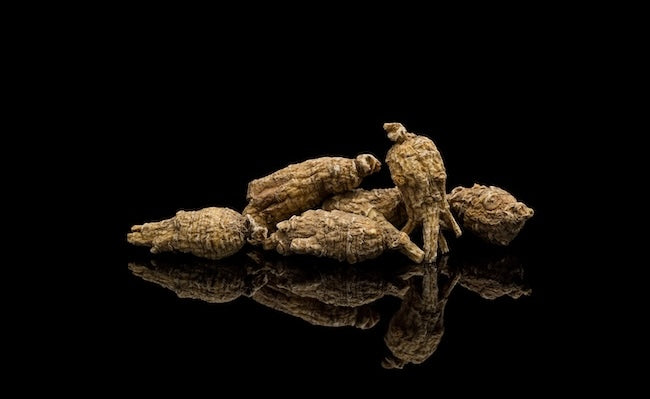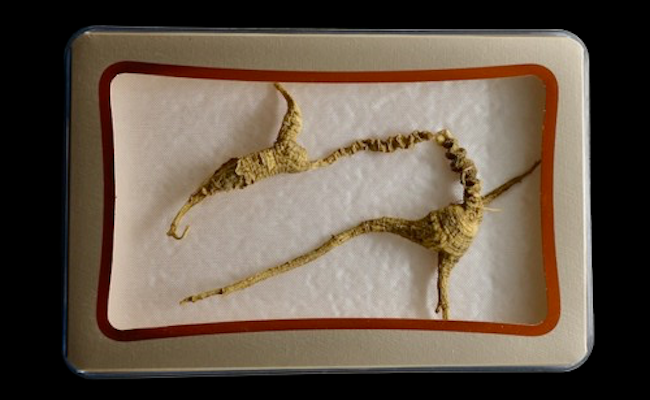Article: A Scientific Approach to Selecting Ginseng
A Scientific Approach to Selecting Ginseng
10+ yr-old wild American ginseng root vs. 3 yr-old cultivated Wisconsin ginseng root
Note
J.C. has deep experiences with American ginseng from farming to grading ginsengs. Any opinions expressed in this blog are his.
Highlights
- Ginseng saponins content increase more dramatically between year 1 and 4
- Ginseng plants grown in tough environment content more ginsenosides
- Roots size and shape have little effect on their ginsenosides concentration
Root Age
Some researches have observed that in cultivated ginseng roots, the total ginsenoside (the active components of ginseng roots) concentration in roots increases with plant age over the lifetime of which the ginseng is in the ground. The most pronounced increase (about two thirds) occurs with the ginsenosides Rb1, mRb1, and Re. Total ginsenoside content increases from about 3% in year 1 to about 8% in year 4; and then it increases very slowly thereafter.
According to my own experiences, another factor may influences the ginsenoside concentration in the roots is their environment where they grown. More the environment prompt to plant diseases, more the root has higher concentration of ginsenosides. Wisconsin ginseng’s individual ginsenoside Rb1 is about 2.5%, but I regularly find roots from some farmers at about 3% that grown up in tough environment. For comparison, the Rb1 in wild ginsengs are over 3.5%. So I strongly believe that ginseng root produces ginsenosides to protect itself against diseases because most of the ginsenosides are found in its skin. That helps to explain why wild ginseng has such high concentration versus its cousin for the same root age.
Root Size and Shape
No difference in total ginsenoside content of dried roots weight between 2 and 8 grams was observed in research trials. Roots smaller than 2 grams contain slightly more ginsenosides than larger roots. Believe it or not, the slender roots (ginseng fibers) contain the highest ginsenosides concentration.
Root shape (long, half short or short) was not found to affect either the individual or total ginsenoside concentration.
In conclusion, in ginsenoside concentration perspective, the big winner is the ginseng fibers. Order a free sample from us and check it out yourself!
Thanks for reading and best wishes from Wisconsin!
References
The Effect of Production Practices on the Quality of Ginseng Roots
Click here for the original document














Leave a comment
This site is protected by hCaptcha and the hCaptcha Privacy Policy and Terms of Service apply.